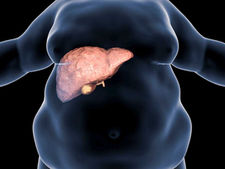
Carpal Tunnel Syndrome
What is carpal tunnel syndrome?
It is a neuropathic disease that occurs as a result of compression of the median nerve in the wrist. Carpal tunnel syndrome, which occurs when the median nerve is damaged as a result of a trauma to the wrist, is usually noticed with severe pain in the wrist. It is likely to be seen in all age groups. However, it is more common between the ages of 45-65. Its incidence is high in women over the age of 40. Although it is characterized by age, today, excessive sitting in front of the computer, stress at work, and long-term driving are among the risk factors for carpal tunnel syndrome.
If the disease progresses and is not treated, loss of sensation, weakness and weakness in the fingers may occur.
What are the risk factors for carpal tunnel syndrome?
Conditions such as pregnancy, individuals who actively use their wrists, genetic predisposition, excess weight, rheumatic diseases, and edema are risk factors that increase the compression of the median nerves. It also helps with rheumatoid arthritis, thyroid diseases, diabetes, etc. Diseases are also among the risk factors for carpal tunnel syndrome.
What are the symptoms of carpal tunnel syndrome?
It is often noticed by pain during exercise and use of the hand or wrist. Symptoms such as pain, numbness and tingling in the hands and wrists, and tingling and numbness in the fingertips are observed. In the initial stages, night pain continues with daytime pain in the later stages. The disease is diagnosed through tests such as physical examination (Phalen and Tinel test, carpal compression test, etc.), MRI, EMG, ultrasonography, computed tomography and blood tests. During physical examination, the patient has difficulty clenching his fist and keeping his hand above his head for a long time. For some patients, it manifests itself as arm and neck pain. It may vary depending on the course of the disease, its severity and the patient's past history.
What are the treatment methods for carpal tunnel syndrome?
In the initial stages of the disease, it is treated with medication and physical therapy. Treatment methods such as conservative treatment, rest, use of analgesics and nonsteroidal anti-inflammatory drugs, and steroid injections are applied. In physical therapy practices, the disease is monitored with treatment methods such as electrotherapy, electrical stimulation and cold compress. In advanced cases, surgery may be required.
FOR INFORMATION AND APPOINTMENT, YOU CAN LEAVE YOUR NUMBER OR ASK OUR EXPERTS
YOU CAN LEAVE YOUR NUMBER FOR INFORMATION AND APPOINTMENT AND ASK QUESTIONS TO OUR EXPERTS



-04.png)
-06.png)
-05.png)
-08.png)
-07.png)























